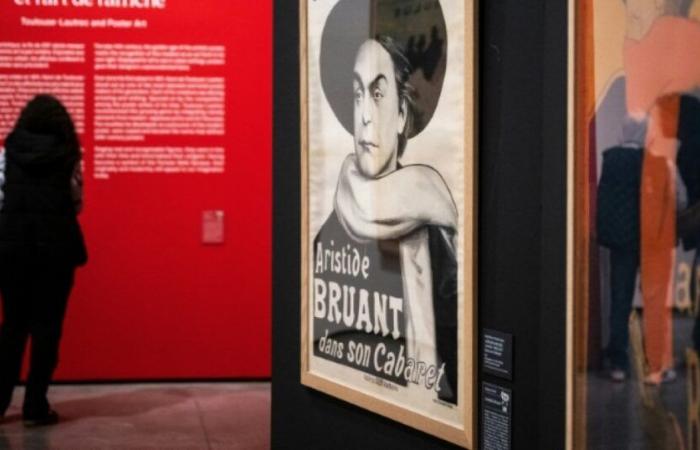They are all there on the walls of the Toulouse-Lautrec museum in Albi, from the famous greedy and Aristide Bruant with the most unknown: for the first time united, the 31 posters of Lautrec come out in full light after four years of restoration, for a retrospective of the works that made its reputation.
“It is a great opportunity to celebrate all the posters that cannot be permanently showed” for conservation reasons, explains to AFP Fanny Girard, the exhibition commissioner “Toulouse-Lautrec and the art of poster”, visible until August 31 in Albi, the hometown of the painter.
“The works on paper, these are works that are very little shown, generally the rule in museums is that they are presented over a limited time, three-four months maximum, and then after them return to black people in the museum’s reserves,” said the museum director who contains all the posters created by Henri de Toulouse-Lautrec (1864-1901).
The 31 posters were given by the family in 1922 to the mayor of Albi while the Luxembourg museum had refused them, says Ms. Girard, due to the artist’s “sulphurous reputation”, familiar with closed houses and known for his portraits of the Bohemian Montmartroise.
Some have never been placked in the streets of Paris, such as this new vertical version of the imposing profile of the singer Aristide Bruant who, over 2.85 meters high, standing on stage, dominates his audience, with the incongruous presence of the Dancer of the Moulin Rouge Jane Avril.
Or the aborted project for the singer Yvette Guilbert, who did not find himself to her advantage and refused the drawing: “For the love of heaven, did not make me so atrociously ugly!”, She wrote to the disappointed poster which hoped “the best success” with this command.
Despite some failed refusals and competitions, Toulouse-Lautrec represents the precursor of the 20th century poster, the experts agree. “I attached the end of a sector which can lead me far enough I hope,” he wrote to his mother in 1892.
– “bias” –
During the last decade of the 19th century, which marked the rise of the illustrated poster and modern advertising, Toulouse-Lautrec stands out as an undisputed innovative and modern poster.
“He adopted a different bias,” explains Fanny Girard. In its posters, it is positioned inside the frame, mixes plans and perspectives “by building impossible space” inspired by Japanese prints, “the aim of which is visual efficiency”, underlines the curator.
As in the poster of La Goulue at the Moulin Rouge, which opens the exhibition, where the cabaret of Boulevard de Clichy is no longer represented by its scarlet wings but by its recognizable light globes of those who frequent it then. Or as the intriguing perspective of a double bass handle of the Jane Avril poster, in an edifying parallel with a work by the Japanese painter Hiroshige Utagawa.
“He will play on different techniques,” continues the commissioner. He uses on a large scale “the spitting”, projection of droplets of toothbrush paint. He innovates in the choice of colors like this olive green, today called “green lautterc”, or these flat blacks that bring up gloves, a hat or a calf.
For the occasion, the Albi Museum offers manipulations in a lithographer workshop to create its own poster like Toulouse-Lautrec.
Enriched with a selection of works borrowed from Parisian museums, Lautrec’s drawings are accompanied by anecdotes and writings of the artist, sometimes with their preparatory studies, sometimes with achievements of other posts of the time.
We discover other facets of the Lautrec posterist, such as its lithographs created to launch literary journals and serial novels from La Dépêche du Midi, or its advertising posters praising the lightness of the confetti invented to replace, during the carnival, the tiny colored plaster prohibited in 1892 because deemed too dangerous.








